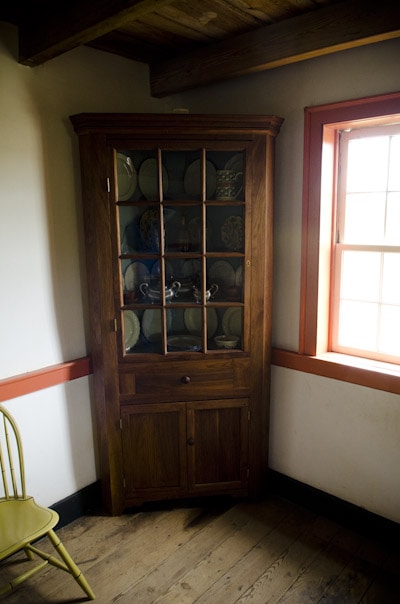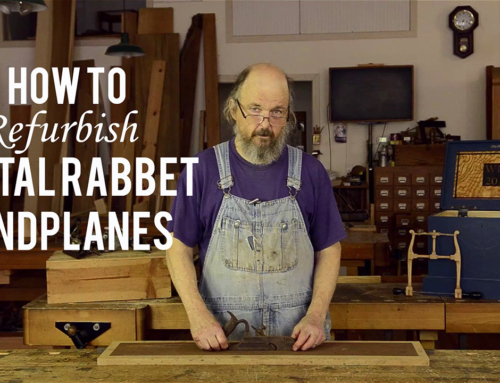Recreating historical furniture like this requires real talent and attention to detail:

In the above video I returned to the Frontier Culture Museum in historical Staunton, Virginia, to visit the men who are responsible for much of the reproduction furniture there: George Lott, Ken Knorr, and David Puckett. George Lott and Ken Knorr volunteer their time, talent, and projects to the museum (wow) and Curator David Puckett researches the historic furniture and puts in orders to George and Ken. A very cool system.

I was especially dying to see all of the antique woodworking tools that George Lott was rumored to own. In my previous post (“1820’s tool chest” ) Steven Gallagher told me about George’s tools and showed me much of his furniture. So naturally, I tracked down George Lott. Not only did he show me his workbenches and tools, but I got to learn an ancient secret recipe for finishing furniture…

Okay, well…err…it’s not exactly a secret recipe. But it is fairly traditional and was oh so gorgeous on that oak arm chair (watch the above video for the recipe).

Below are are some detailed shots of George’s (and some of Ken’s work) breathtaking historic furniture from this building (much more to come from the other farmhouses)…but first make sure you subscribe so that you don’t miss the upcoming 2 or 3 videos about George Lott’s tools and furniture.


The above desk is my favorite piece of furniture in the whole museum (it’s in the 1850’s American farm).

Notice the beautiful square pegs that pull the tenons tight into the mortises.

Ken Knorr built this walunt school teacher’s desk (above) and George and Ken built the school benches (below).
Wedging the tenons keeps the joint nice and tight:
George’s very nice walnut corner cupboard:

About the Frontier Culture Museum
The Frontier Culture Museum is unlike anything I’ve encountered. The organization has disassembled actual period farms from England, Ireland, Germany, Africa, and different parts of the United States, then reconstructed them on several hundred acres of lush Virginia farmland. Why? To educate Americans on how our American farms were influenced by immigrants from overseas. You can see the different farms here.
What I found particularly fascinating was the woodworking tools and furniture displayed at each of the 10 farms. The staff actually use the respective tools to construct furniture and tools. It is a hands on “museum” so I just helped myself to all the amazing tool chests! The staff didn’t mind. They also didn’t mind that I constantly caressed their reproduction furniture either…although I got some strange looks.












